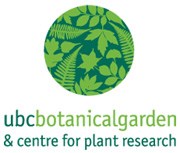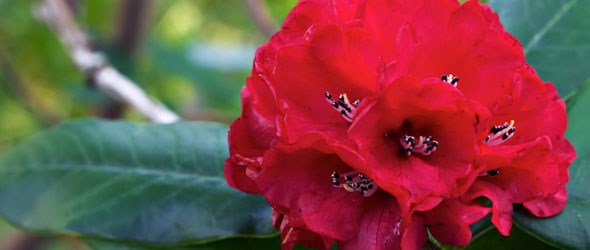 |
UBC Botanical Garden is Canada's oldest continuously operating university botanical garden. The original mission of the garden was research into the native flora of British Columbia. Over the past nine decades, our mission has broadened to include research, conservation, teaching and public display of temperate plants from around the world, particularly Asian, alpine and native plants. We’re also home to the Greenheart Canopy Walkway.Come visit us - we’re located at 6804 SW Marine Drive, Vancouver, BC. You can find more info at botanicalgarden.ubc.ca |
A visit to UBC Botanical Garden in March, April or May often centres around the viewing of rhododendrons and magnolias, as this is the time when the majority of these plants are in bloom. The earliest rhododendrons are often in flower in February, but because of the cool, rainy weather typical this time of the year, flowering lasts for weeks or even months. There is perhaps no better example of this than Rhododendron barbatum, a rhododendron known as much for its bearded leaf stalks and young shoots (barbatum= bearded), as for its incandescent scarlet flowers that typically open in late February or early March.
At first opening, all of the sumptuous, red flowers in the truss appear squashed, the throats nearly closed and the stamens barely visible. At this time, nighttime temperatures can hover around freezing and plants are often continually drenched in rain, but the flowers of this high elevation Himalayan species are seldom damaged. As the temperature rises over the next few weeks, the axis of the truss expands and the flowers open, gradually exposing each flower’s characteristic funnel-shape and the five dark nectar pouches deep within.
Even out of flower, R. barbatum is attractive with its its handsome, coarsely veined, dark, dull green leaves and cinnamon coloured bark that peels in small papery sheets and shreds. This species requires a cool, woodland setting where it typically grows to 6 or 7 metres after a couple of decades. This is certainly the case in the David C. Lam Asian Garden, where visitors can see a number of larger specimens (near the corner of Lower Asian Way and Stearn Trail) in various stages of bloom. If you are unfamiliar with our facility, our gatekeepers are happy to point visitors in the direction of blooming rhododendrons and other points of interest in the Garden.



